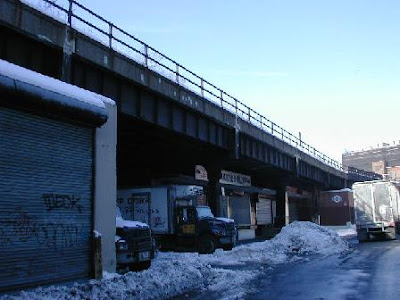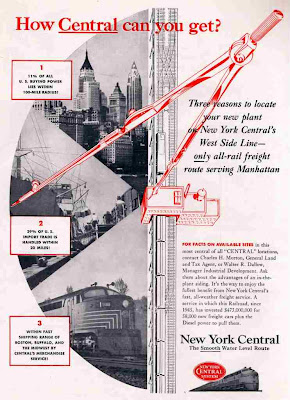.jpg)
.jpg)
.jpg)
.jpg)
“Parks are our town-hall meetings. We disrupt them, with shows of contempt, or little displays of impishness, for the same reasons that protesters tote AR-15s instead of talking about PPOs: to wrest a bit of control. The thrill of sullying pristine environments—of planting a handprint in freshly laid concrete—is particularly acute in those precincts in which there aren’t many pristine environments left to sully.” Lauren Collins, The New Yorker, 14 September 2009
Three years ago, an area of the West Chelsea neighborhood in New York City was industrial, dirty, and covered with graffiti. A decaying iron railroad dominated the landscape. Today, in that same area, the young and the fashionable mill about. Stores and cafes abound. A trendy, newly opened hotel brags that it is located “in the heart of downtown Manhattan’s meatpacking district.”[1] What happened?
In 2006, construction began on the High Line, an industrial railroad that was built in the 1930s, totally abandoned by the 1980s, and, in the past three years, reborn as an urban park. The site, which runs from Gansevoort to 34th street between 10th and 11th Avenues, makes no pretense at concealing its past: the iron frame of the railroad remains exposed, but it now supports gardens and benches instead of rubbish and undergrowth. The High Line project has renewed the elevated railway, but has also prompted shops, clubs, hotels, restaurants, and museums to come to the area. The revitalization of the High Line as an urban park is the last step in the gentrification of New York City’s meatpacking district.
--Erica
I think what is missing here is a clear argument. If your argument is the positive impact of the park on the neighborhood as your answer to "what happened?," that's perfectly fine, but I think it can be better expressed in the introduction. In its current form I see that point as a description rather than an argument. Also, the word gentrification is a very loaded word nowadays. You may need to explore it in your essay by first referring to different takes on the idea of gentrification, and then discussing what made this instance more successful (and at what cost, because i think gentrification usually has an element of cost, social or physical rather than financial, associated with it).
ReplyDeleteI would have to agree with the previous post. I think this is a great topic, but you really generalize there at the end. What does "last step" mean? And I'm not sure if the High Line really represents an act of gentrification in the traditional sense. I think it might be more interesting to talk about how they didn't rip down the railroad and build some condominiums or swanky bar/hotel there. Instead they kept the built environment intact and created something new and open to everyone. Certainly, you should argue where you see the evidence the strongest, but I think that maybe it deserves some further investigation into the unique aspects of the new High Line.
ReplyDeleteI considered writing about this! Hehe.
ReplyDeleteOkay-- I don't think the quote at the beginning really sets the stage for what this paper seems to be about. It doesn't fit with your thesis. Also, it's a long quote, so if you don't relate back to it or analyze it, the reader may just be distracted/confused. Gentrification usually has a negative connotation, but re-greening has a good one, so I'd be interested to see how you'll reconcile those.
I disagree with the second comment. yes, "they" could have ripped down the high line and built condos and swanky bar/hotel...but in fact they did exactly that. they kept the high-line AND built swanky designer stores and bars and hotels around it. it is the creation of a neighborhood - The High Line - not merely a railroad turned into a park, and that's what's fascinating.
ReplyDeleteAlso, I'm not sure I would say it's the *last* step in gentrification, but it is certainly a bold one.
will you compare this garden to ones in paris and europe? where did this idea come from?
ReplyDelete